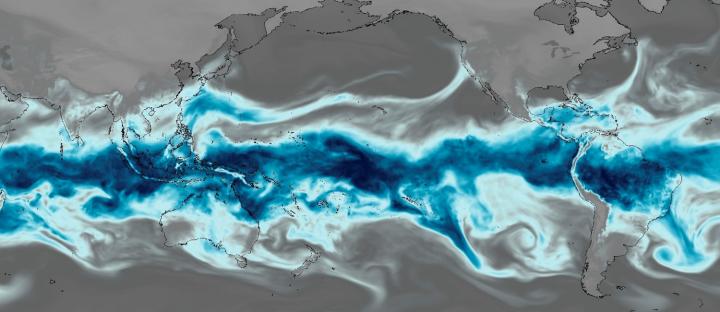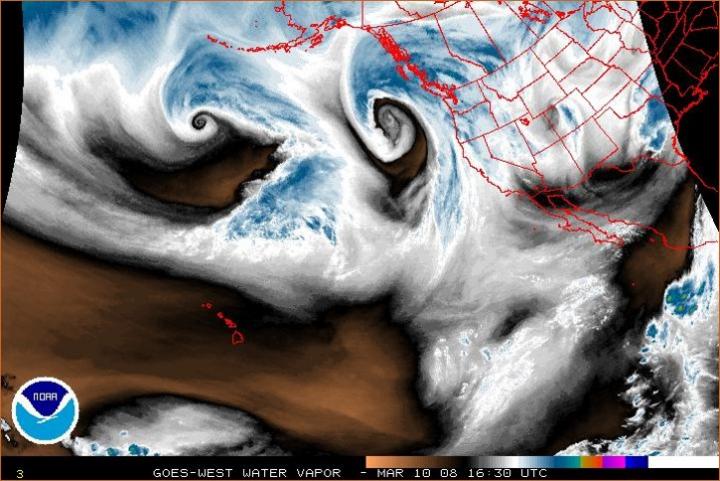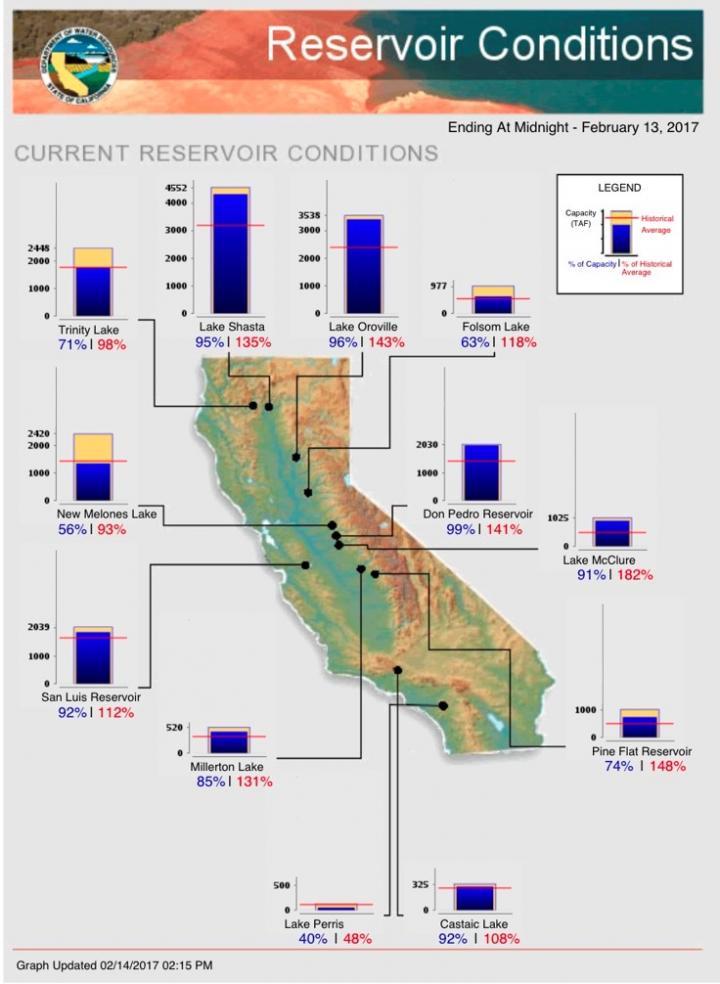Who knew Californians might be calling the five dry years of drought “The Good Old Days”? The state is being slammed by flying “Atmospheric Rivers”—rivers in the sky.
The state is floundering in rain, snow, floods and mudslides. Roads are washing out. Dams are threatening to fail. Hundreds of thousands of people have been ordered to evacuate.
Californians needed some rain, but this is ridiculous. The old proverb “Big Droughts are ended by Big Floods” is proving disastrously true.

Plumes of moisture from tropical Pacific storms are spraying California. Credit: NASA
The state is being hit by tropical “atmospheric rivers”. When the cool La Niña in the Tropical Pacific started to fade in mid-December, the region became stormier. The rotation of the Earth spun the moisture from these storms away from the equator. The moisture formed huge flying plumes of water that meteorologists call atmospheric rivers. When they sail over cooler land masses, they spray the land with tremendous amounts of rain and/or snow.

Winter is the normal rainy season for the West Coast, when storms sweep in from the North Pacific.
This is also normally California’s rainy season, when North Pacific storms hit the Golden State. The West Coast is being “tag-teamed by rain from both the north and the tropics. The result has been some record-breaking storms.

California’s reservoirs are full to overflowing. Credit: California Department of Water
As a result, the state’s reservoirs levels are in good shape, holding 121% of what they normally would have this time of year. With most of the rain hitting the northern portion of the state, dams are even having to release excess water downstream. Even better, the state’s snowpack, where one-third of its water supply comes from, is at 174% of normal for this time of year.

California has received abundant snow this winter. Credit: California Department of Water
Unfortunately, the state is still short of underground water, since it used more than 6.5 trillion gallons of water over the past 5 years of drought. Because of this, the state government will continue emergency drought regulations at least through May. If you want the drought to officially end, keep your fingers crossed and hope for more flying rivers.














